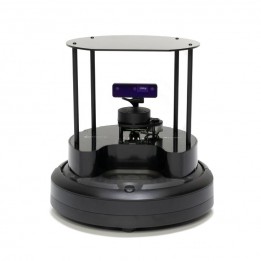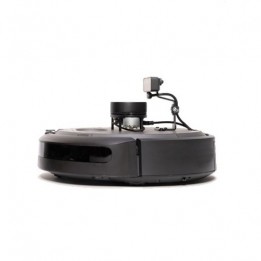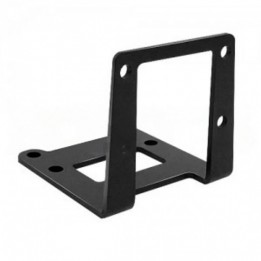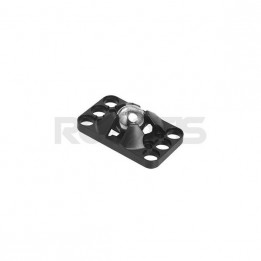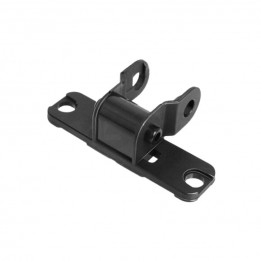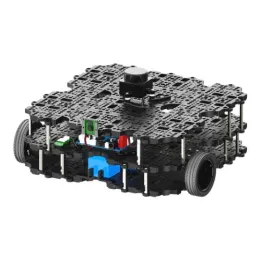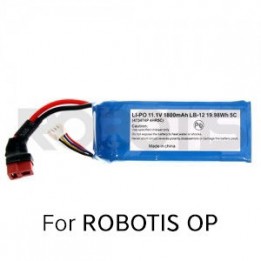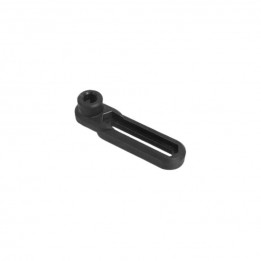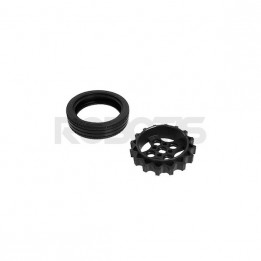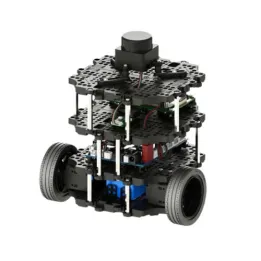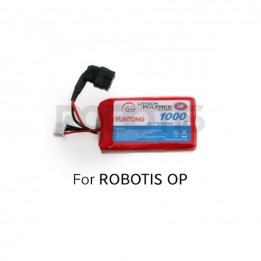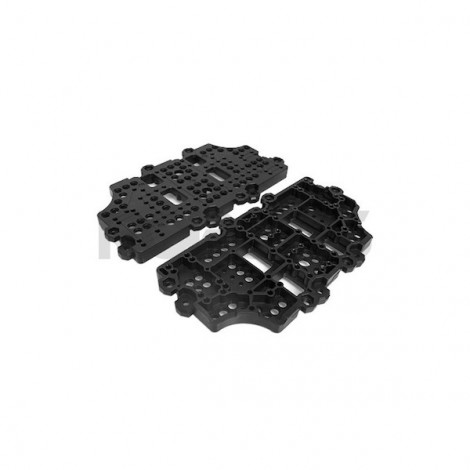Mobile robot Turtlebot
The TurtleBot is an affordable, versatile, and user-friendly indoor mobile robot that offers many possibilities for learning and research in mobile robotics. It is programmable with ROS and provides advanced capabilities. This robot is particularly suitable for mapping (SLAM) and navigation. It is widely used in universities, research labs, and companies to develop new technologies and solve complex problems in robotics.
A complete mobile robot for education and research
It is equipped with sensors, including LiDAR and cameras, to navigate and perceive its environment. It was developed to facilitate learning and research in mobile robotics and is used in many applications such as mapping, object recognition, and surveillance.
The TurtleBot has a payload platform to carry additional equipment, making it a very versatile mobile robot. It is also equipped with an onboard computer, a navigation system, and various programming interfaces that allow developers to customize the robot's behavior according to their needs.
Besides its great flexibility, the TurtleBot is also elementary to use and program. Thanks to its modular design, it is possible to easily extend or customize it with accessories such as robot arms or additional sensors. Moreover, the open-source community around the TurtleBot offers active support to users, further facilitating its use and development.
TurtleBot 3 vs TurtleBot4: What are the differences?
| TurtleBot 4 Standard | TurtleBot 4 Lite | TurtleBot 3 Burger | TurtleBot 3 Waffle Pi | |
| Camera | Luxonis OAK-D Pro camera |
Luxonis OAD-D Lite camera |
- | Raspberry Pi camera |
| LiDAR | RPLIDAR-A1 | RPLIDAR-A1 | LiDAR LDS-01 | LiDAR LDS-01 |
| Microcontroller | Raspberry Pi 4 B (4 Go) | Raspberry Pi 4 B (4 Go) | Raspberry Pi 3 or 4 B (2 or 4 Go) | Raspberry Pi 3 or 4 B (2 or 4 Go) |
| Payload | 9kg (15 kg in costum) | 9kg (15 kg in costum) | 15 kg | 30 kg |
| Autonomy | 2h30 – 4h | 2h30 – 4h | 2h30 | 2h |
TurtleBot 4: a fully assembled robot with ROS2
Available in 2 models: TurtleBot 4 Standard and TurtleBot 4 Lite, the TB4 is equipped with an iRobot® Create 3 mobile base, a programmable Raspberry Pi4 computer with ROS2, a 2D LiDAR, an OAK-D camera, and many other features.
Ultra-fast startup with ROS2
The TurtleBot 4 has the advantage of being pre-installed and configured with ROS2. It comes with detailed documentation for users, an Ignition Gazebo simulation model, demonstration code, and a set of tutorials, making it easy to get started and enabling rapid application development.
The TurtleBot 4 is now compatible with ROS 2 Humble, an update that brings many additional features. These include support for namespaces, mail delivery, "Patrol Loop" navigation, and more.
Embedded sensors
This robot is equipped with numerous integrated sensors that facilitate various robotic applications. These sensors include:
- Luxonis OAK-D depth camera
- 2D RPLIDAR-A1 LiDAR
- IMU
- Optical ground tracking sensor
- Wheel encoders
- Series of infrared sensors for the cliff, bump, and slip detection
Data from all these sensors is available as ROS topics through the ROS2 API connected to the network.
An open-source platform
The TurtleBot 4 features an open-source platform accessible online, allowing you to try it out, enhance it, or even create your version. In support of the open-source approach, a portion of the proceeds from each shipped TurtleBot 4 is donated to Open Robotics.
The TurtleBot 4's mobile robot is built on top of the iRobot® Create® 3 educational robot that provides an IMU, optical ground tracking sensor, and wheel encoders for precise positioning and location. TB4 comes in two models: TurtleBot 4 Standard and TurtleBot 4 Lite
The TurtleBot 4's mobile robot is built on top of the iRobot® Create® 3 educational robot that provides an IMU, optical ground tracking sensor, and wheel encoders for precise positioning and location.
This camera mount is designed to attach a Raspberry Pi camera to a TurtleBot3 robot or OpenManipulator TurtleBot3 controller.
The A01 ball caster is fully compatible with the plate of your Turtlebot3 Waffle Pi robot.
The ICT-01 component for TurtleBot3 allows you to replace the used caterpillar parts of your robot quickly and easily. Here you go again!
TurtleBot3 Waffle Pi is an affordable and extensible ROS platform, ideal for learning and research in mobile robotics. It is based on a compact chassis with Dynamixel servomotors, Raspberry Pi 4, LiDAR and an inertial measurement unit (IMU).
This 1,800 mAh LIPO battery is the perfect choice for charging your TurtleBot 3, Robotis OP3 or DARwin-OP robot. It incorporates a PCM specially designed to protect the battery.
This set of 12 IBB-01 supports for TurtleBot Waffle will allow you to connect various devices to upgrade your mobile robotics platform!
Your TurtleBot3 deserves robust and long-lasting wheels: the TB3 Wheel/Tire Set-ISW-01 is the perfect fit for your Dynamixel servos!
Do you need to make an addition to your TurtleBot3? You’ll never get caught out with the IPL-01 plate for TurtleBot Waffle!
The Turtlebot3 Burger is a mobile robotics educational platform that’s lightweight, compact, cost-effective and customisable at will. It’s the perfect solution for all those looking for a fun medium to use in their robotics programming workshops, but also for apprentice robotics engineers, and for creators and designers.
This battery is compatible with TurtleBot3 and Robotis OP robots and incorporates a protection system.

